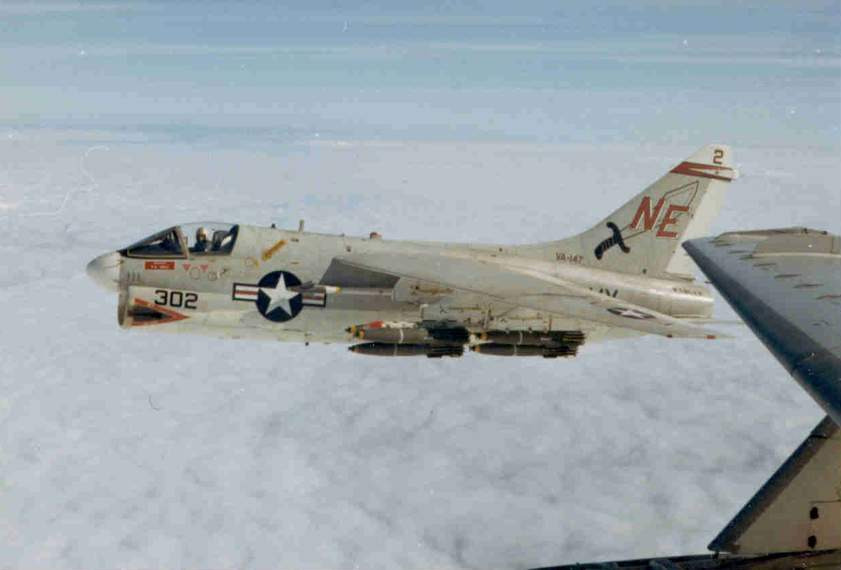Description and History
In 1960, the Douglas A-4 Skyhawk began to show signs of being obsolete, and the US Navy realized it needed a new, more capable light attack aircraft to replace the A-4s. The original goal was to develop a supersonic platform with improved payload capacity. However, in December 1962, the Sea-Based Air Strike Forces study group concluded that a subsonic aircraft would be more efficient for the Navy’s needs. A subsonic design would allow for a smaller, more affordable airframe that could be produced in greater numbers while still meeting operational requirements.
On May 17, 1963, the Navy formally launched a new program to select a next-generation light attack aircraft, designated VAL (Heavier-than-air, Attack, Light). A request for proposals was issued on June 29, 1963, calling for a single-seat aircraft capable of carrying 15,000 pounds of external stores, operating from carrier decks within a 600-nautical-mile combat radius, and being compatible with aerial refueling. Additionally, to reduce costs and accelerate development, the aircraft had to be based on an existing design and enter service by 1967.
Four manufacturers submitted proposals: Douglas with an enlarged A-4 Skyhawk, Grumman with a modified A-6A Intruder, North American with an upgraded FJ-4B Fury, and Ling-Temco-Vought (LTV), which submitted a shortened and modified version of its F-8E Crusader. By November 8, 1963, LTV was announced as the winner of the competition.
On February 8, 1964, the Navy awarded a contract for three YA-7A prototypes, four service test aircraft, and 35 production models. The first YA-7A prototype rolled out on August 13, 1965, and flew for the first time on September 27, 1965. It was officially named the “Corsair II” in honor of the famed Chance Vought F4U Corsair of World War II.
Fleet training squadrons VA-174 and VA-122 received their first A-7As in September and October 1966, respectively, and carrier qualification trials were conducted aboard the USS America (CVA-66) in November 1966.
The production A-7A differed from the prototypes in several key areas. It was equipped with two nose-mounted 20mm Colt-Browning Mk 12 cannons with 340 rounds per gun and featured a non-computing optical reflector gunsight, as a modern HUD was not introduced until later variants. Avionics included the AN/APQ-116 forward-looking radar, AN/APN-153 Doppler radar, ASN-41 inertial navigation system, and the CP-741 weapons delivery computer. An ECM antenna was mounted in a fairing atop the vertical stabilizer.
Powered by a Pratt & Whitney TF30-P-6 turbofan engine rated at 11,350 lbf of thrust, the A-7A could reach speeds of up to around 685 mph at sea level. It had eight external hardpoints: three under each wing and one on each fuselage side. Wing pylons could carry up to 3,500 pounds each, while fuselage pylons were limited to 500 pounds and typically used for AIM-9 Sidewinders or LAU-33A/A Zuni rocket launchers.
VA-147 “Argonauts” became the first operational squadron to deploy the A-7A, embarking aboard the USS Ranger (CVA-61). After an intensive training program, the squadron received clearance for combat operations. On December 3, 1967, VA-147 launched its first A-7A strike mission over North Vietnam, successfully hitting targets near Vinh with no aircraft losses.
In combat over Vietnam, A-7As typically carried six Mk 82 500-pound bombs, two LAU-32 2.75-inch rocket pods, and two 300-gallon external fuel tanks. For deeper penetration missions into North Vietnam, they were also armed with Sidewinders for self-defense. A total of 199 A-7As were produced before production shifted to the improved A-7B variant.









